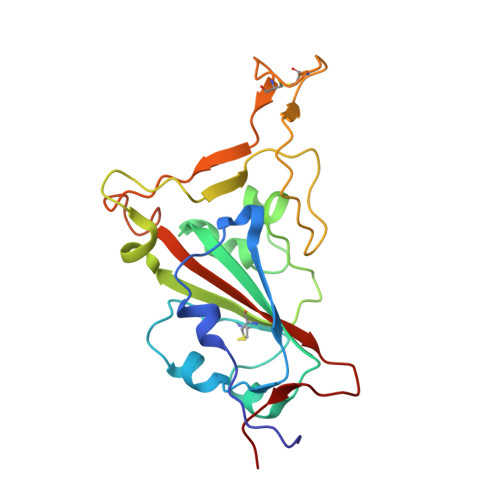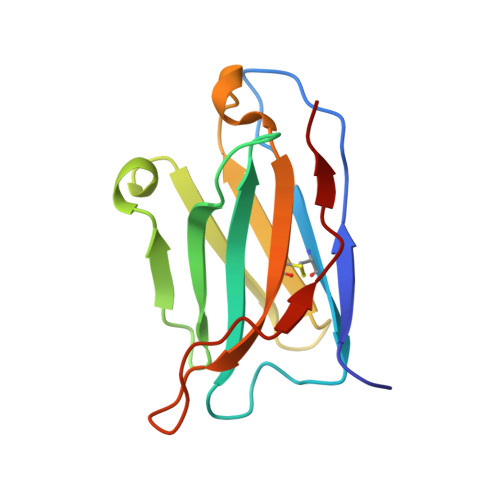Potent neutralization of SARS-CoV-2 variants of concern by an antibody with an uncommon genetic signature and structural mode of spike recognition.
Kramer, K.J., Johnson, N.V., Shiakolas, A.R., Suryadevara, N., Periasamy, S., Raju, N., Williams, J.K., Wrapp, D., Zost, S.J., Walker, L.M., Wall, S.C., Holt, C.M., Hsieh, C.L., Sutton, R.E., Paulo, A., Nargi, R.S., Davidson, E., Doranz, B.J., Crowe Jr., J.E., Bukreyev, A., Carnahan, R.H., McLellan, J.S., Georgiev, I.S.(2021) Cell Rep 37: 109784-109784
- PubMed: 34592170
- DOI: https://doi.org/10.1016/j.celrep.2021.109784
- Primary Citation of Related Structures:
7T01 - PubMed Abstract:
The emergence of severe acute respiratory syndrome coronavirus 2 (SARS-CoV-2) lineages that are more transmissible and resistant to currently approved antibody therapies poses a considerable challenge to the clinical treatment of coronavirus disease (COVID-19). Therefore, the need for ongoing discovery efforts to identify broadly reactive monoclonal antibodies to SARS-CoV-2 is of utmost importance. Here, we report a panel of SARS-CoV-2 antibodies isolated using the linking B cell receptor to antigen specificity through sequencing (LIBRA-seq) technology from an individual who recovered from COVID-19. Of these antibodies, 54042-4 shows potent neutralization against authentic SARS-CoV-2 viruses, including variants of concern (VOCs). A cryoelectron microscopy (cryo-EM) structure of 54042-4 in complex with the SARS-CoV-2 spike reveals an epitope composed of residues that are highly conserved in currently circulating SARS-CoV-2 lineages. Further, 54042-4 possesses uncommon genetic and structural characteristics that distinguish it from other potently neutralizing SARS-CoV-2 antibodies. Together, these findings provide motivation for the development of 54042-4 as a lead candidate to counteract current and future SARS-CoV-2 VOCs.
Organizational Affiliation:
Vanderbilt Vaccine Center, Vanderbilt University Medical Center, Nashville, TN 37232, USA; Department of Pathology, Microbiology, and Immunology, Vanderbilt University Medical Center, Nashville, TN 37232, USA.
















